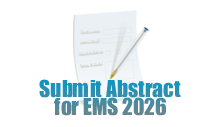 Environmental Mass Spectrometry - Our Window into Water
Environmental Mass Spectrometry - Our Window into WaterVendor Lunch Speaker
Oral Presentation
Prepared by D. Snow
Waters - Univ of Nebraska Water Sciences Laboratory, 203 Water Sciences Laboratory 1840 N. 37 St., University of Nebraska-Lincoln, Lincoln, Nebraska, 68583-0844, United States
Contact Information: [email protected]; 402-472-7539
ABSTRACT
Mass spectrometry has played a role in so many critical discoveries about our world, environment, and water. Science using the principals of mass spectrometry started over a century ago, and the technology has progressed to the point today where almost anyone can use it. In spite of its almost universal use in environmental methods today, many users find developing mass spectrometry methods to be quite challenging. Sample preparation, especially for multi-residue environmental and emerging contaminant analysis, is still an art - mostly trial and error. Changing matrices and the desire to measure extremely low contaminant concentrations present new obstacles in recovering what is desired while leaving interferences behind. Improvements in ionization efficiency, signal acquisition rates, and data manipulation provide detection limits not thought possible even a decade ago. This window into water helps us better understand contaminant occurrence and risks to using, and sometimes abusing, our freshwater resources.

